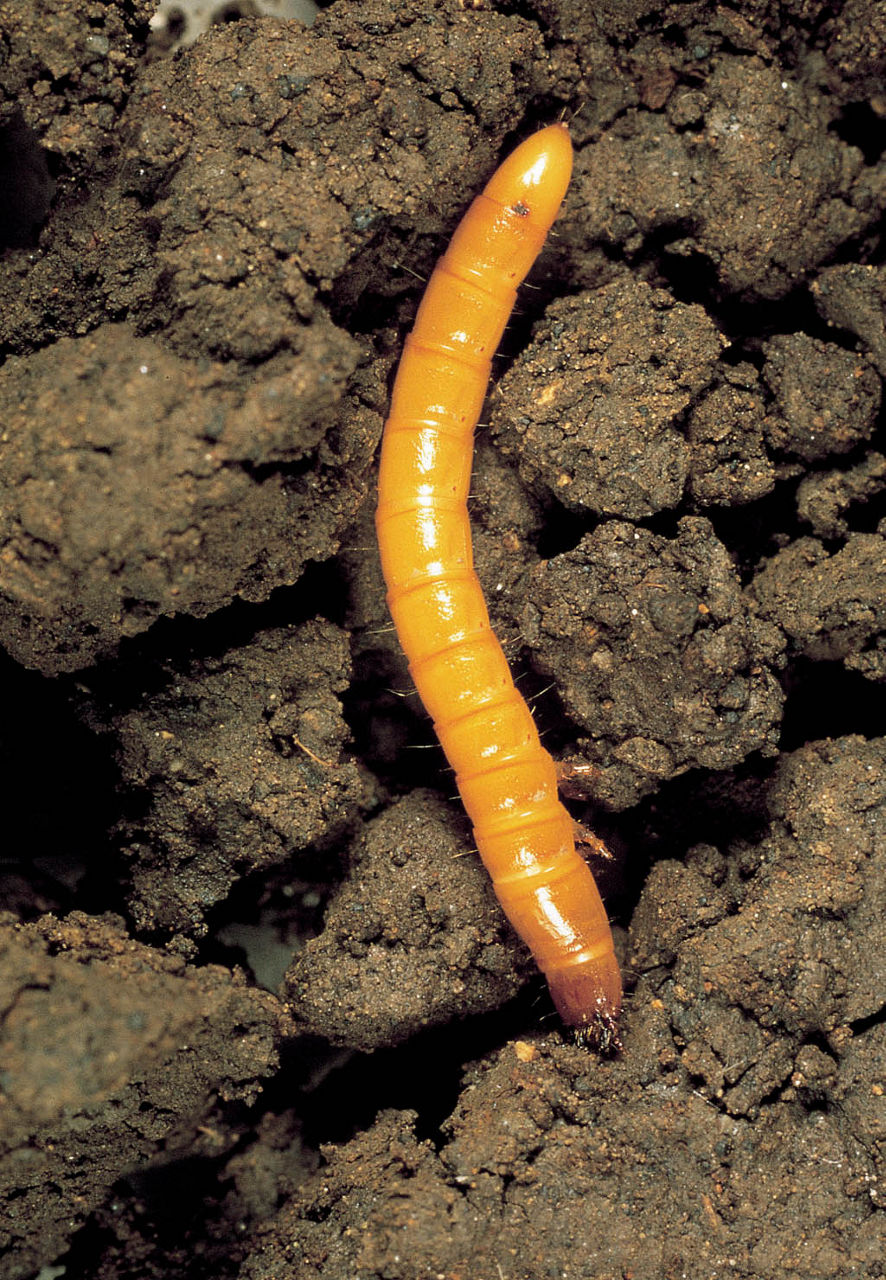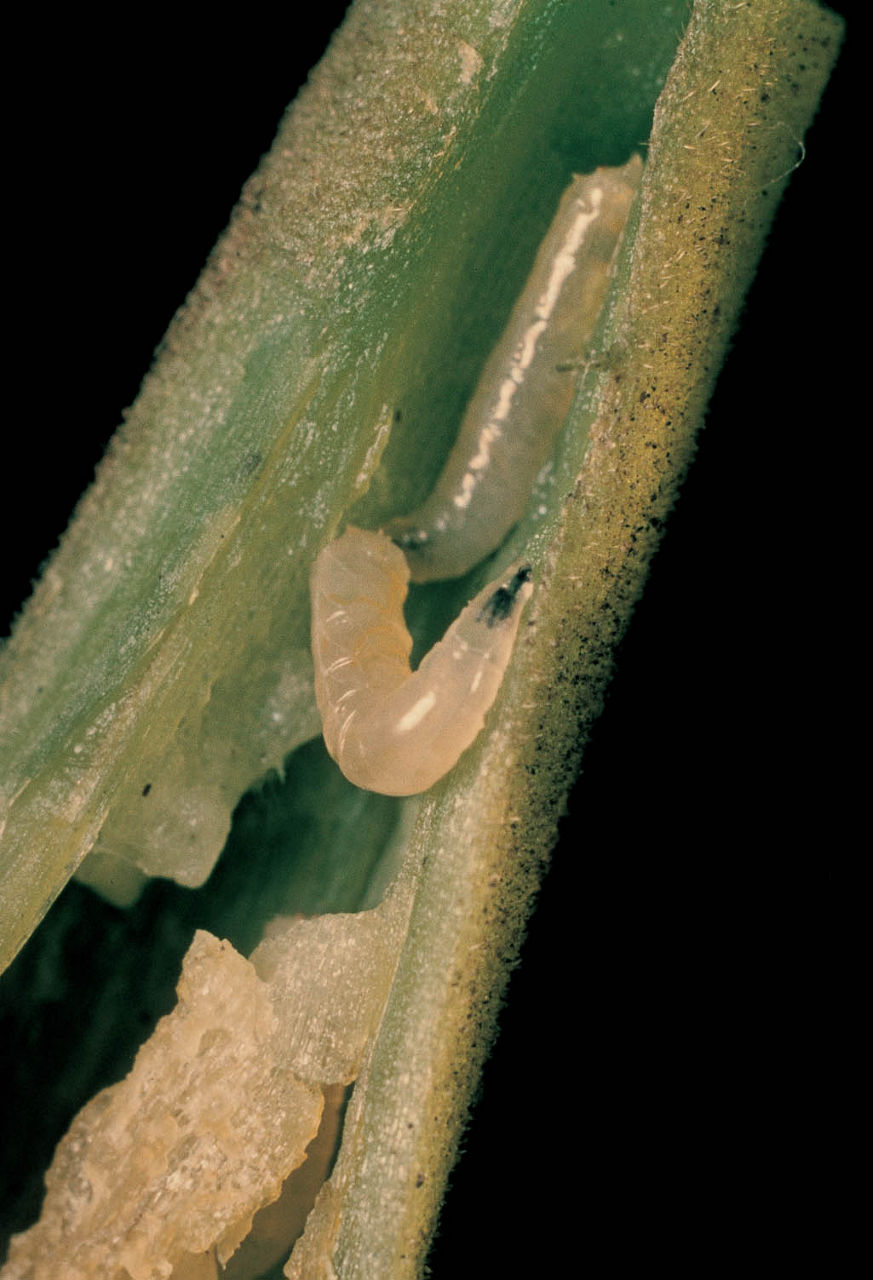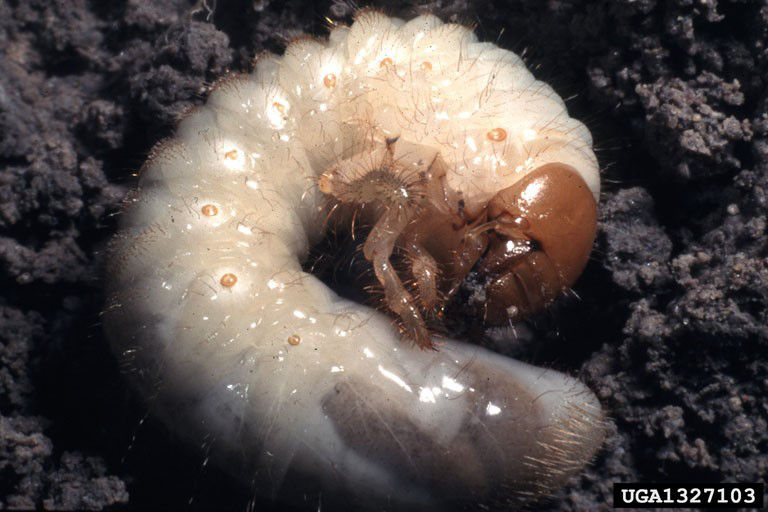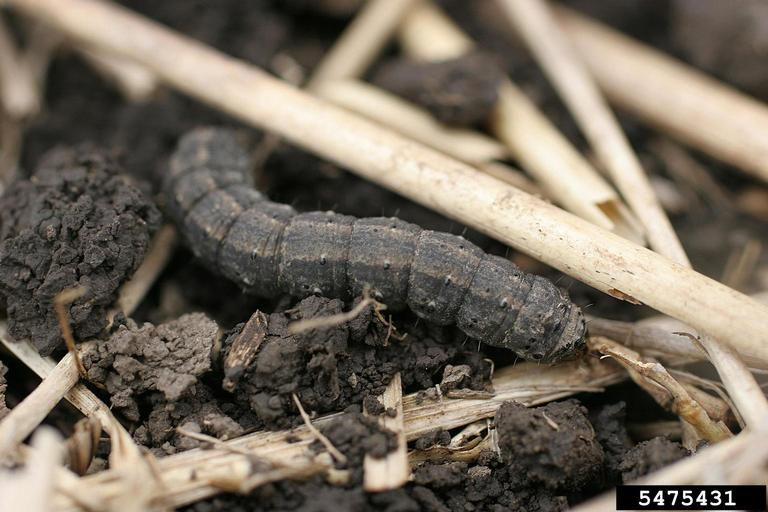3 MIN READ
Early Season Insects of Soybean
July 25, 2021
Early season insects can feed on soybean seeds and seedlings causing plant injury, stunting, delayed emergence, or stand loss. Scouting is necessary to determine the types of insects present and their population densities in order to make informed management decisions. Sampling methods include visual counts, soil sampling, and using baited traps.
What to look for in the field?

Bean leaf beetle (BLB). Adult BLB (Figure 1) are about 1/4 inch in length. The most distinguishing characteristic is the presence of a small black triangle located at the base of the forewings. Some beetles will have four black markings on the wings. Typically, the beetles are dark yellow in color but can range in hues of yellow, orange, and red. Early season injury to soybean is caused by the overwintered adults feeding on cotyledons, leaves, and stems. In addition, this pest can transmit bean pod mottle virus.
Bean leaf beetle scouting. Scouting for BLB should begin as soon as cotyledons have emerged and continue weekly. Count the number of adult insects on the plants and evaluate the percent damage in 5-meter diameter areas in several random locations throughout the field.

Wireworm. Wireworm (Figure 2) can be a problem in soybean, especially in fields previously planted with sod or small grains. Wireworms are hard-bodied, slender, brownish larvae that grow to about 1 inch long. They feed on seeds and seedlings.
Wireworm bait stations. Mix together approximately 1/2 cup each of untreated wheat and corn seeds and bury 6 inches deep in the soil. To increase soil temperature and facilitate germination, cover the trap with a piece of black plastic covered by a larger piece of clear plastic. Traps should be installed two to three weeks before planting and placed uniformly throughout the field.

Seedcorn maggot. These maggots are yellowish-white, about 1/4 inch-long, and lack a defined head and legs (Figure 3). Seedcorn maggots feed on newly planted soybean seeds and can reduce stands.

White grub. True white grubs and masked chafer grubs can damage soybean seedlings, especially when the soybean crop follows sod or another cover crop. White grubs range in size from1/4th to over 1 inch long and have white bodies with tan to brown heads (Figure 4). White grub species can be distinguished from one another by the pattern of rasters (bristle-like hairs) on the tip of the abdomen. White grubs feed on plant roots.
To determine the presence of white grubs and wireworms, examine a 1 foot wide by 2 feet long by 6-inch deep volume of soil (1 cubic foot). Take one soil sample in five randomly selected areas of the field a few days before planting.

Cutworm and armyworm. These caterpillars are generally 1 to 2 inches long. Cutworms are gray, brown, or black in color, and marked with dark spots or lines (Figure 5). Armyworms may vary from green to almost black, often with bright stripes down the body. These worms feed on leaves and stems, often severing the emerging seedling and cotyledons.
Cutworm and armyworm scouting. Beginning with seedling emergence, observe 20 plants in five different areas throughout the field for evidence of leaf feeding or cutting and measure the size of the worms. To find larvae during the day, dig 2 to 3 inches into the soil.

Soybean aphid (SBA). Soybean aphids are very small (less than 1/16 inch long), soft-bodied, pear-shaped insects (Figure 6). They vary in color from pale yellow to light green with black cornicles on the back of the abdomen. Early season aphid feeding can lead to stunted plants with fewer nodes, which can result in fewer pods. Soybean aphids can also transmit virus diseases to soybeans.
Early season soybean aphid scouting. Use a magnifying glass to inspect the undersides of the topmost trifoliate leaves where early season aphids are most likely to be found. Check 30 plants in 10 to 20 locations throughout the field on a weekly basis.
Preventative treatments, like seed treatments, may be available to help provide above ground protection from early season BLB and SBA for up to 30 days after planting. After emergence, scouting can help determine if action thresholds are met and insecticide application is warranted. However, treatment action thresholds (Table 1) can vary by state, pest, and stage of crop development. Consult with an Extension entomologist and/or agronomist for local recommendation.
Table 1. Treatment recommendations and action thresholds for early season soybean insects.

Sources
1 Boyd, M. L. and W. C. Bailey. 2000. Soybean pest management: Bean leaf beetle. G7150. University of Missouri Extension. https://extension.missouri.edu/publications/g7150
2 DiFonzo, C. 2009. Heavy soybean aphid infestations on early-season soybeans. Michigan State University. https://www.canr.msu.edu/fieldcropsent/uploads/files/14EarlySeasonSBA.pdf
3 Field Crops IPM. 2009. Purdue University. https://extension.entm.purdue.edu/fieldcropsipm/
4 Koch, R., and B. Potter. 2018. Early season scouting for soybean aphid. University of Minnesota Extension. https://extension.umn.edu/soybean-pest-management/scouting-soybean-aphid
5 Scout info. University of Kentucky. Kentucky IPM Pest Information Pages.
https://ipm.ca.uky.edu/scoutinfo
6 Soybean insects guide. 2011. Iowa State University. https://www.ent.iastate.edu/soybean-insects-guide
4017_S2
You may also like...
Here are some articles that may also be of interest to you